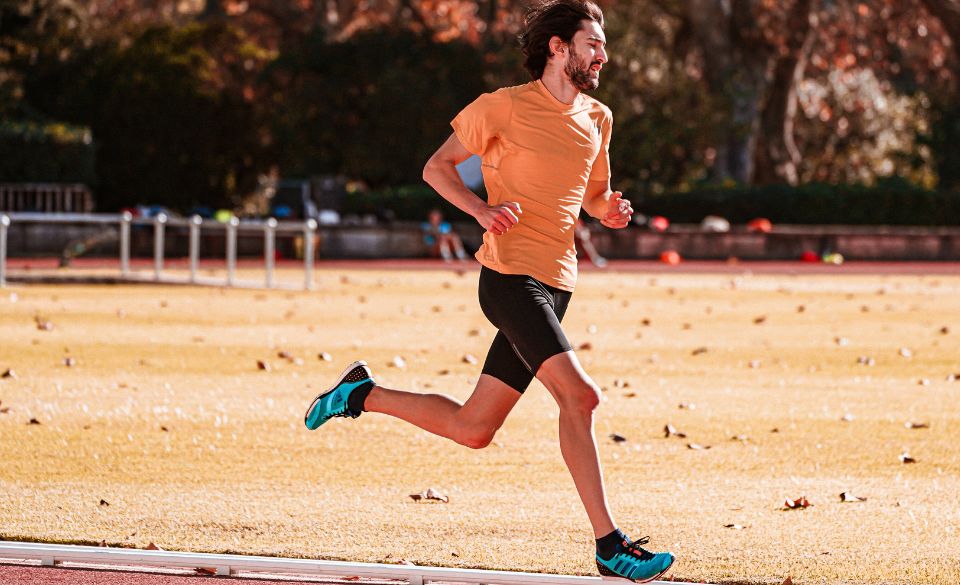
Why Do Runners Have Skinny Legs? Debunking the Myth
Page Contents
When it comes to runners and their physique, one common observation is that they tend to have skinny legs. While this observation is accurate to some extent, the reasons behind it are multifaceted. In this article, we will explore the various factors that contribute to the slender legs of runners and debunk some common myths associated with this phenomenon.
The Role of Genetics
Genetic Predisposition: Genetics play a significant role in an individual’s body shape, including the distribution of muscle and fat. Some people are naturally predisposed to have leaner legs, making them more suited for endurance sports like running.
The Mechanics of Running
Efficiency in Motion: Running is a high-impact, repetitive activity. To optimize efficiency, runners tend to develop lean, streamlined legs. The lower body’s reduced mass minimizes the energy required for each stride, allowing for improved endurance.
Muscle Composition
Type of Muscle Fiber: The composition of muscle fibers can vary among individuals. Long-distance runners often have a higher proportion of slow-twitch muscle fibers, which are designed for endurance. These fibers are more slender than their fast-twitch counterparts, contributing to the appearance of skinny legs.
Caloric Expenditure
Energy Balance: Runners expend a significant amount of calories during their training and races. This caloric expenditure can lead to reduced body fat, including in the legs. As a result, the muscles beneath the surface become more defined, giving the legs a leaner appearance.
Training Emphasis
Specificity of Training: Runners focus their training on cardiovascular endurance and leg strength. While this develops powerful leg muscles, it tends to favor muscle tone and endurance over hypertrophy, which results in slimmer legs.
Nutrition and Body Weight
Maintaining a Healthy Weight: Runners tend to maintain a healthy body weight, which can contribute to slimmer legs. While some strength and power athletes may have bulkier leg muscles, runners prioritize staying lean and agile.
Body Composition vs. Function
Function Over Form: It’s important to remember that runners prioritize their legs’ function over their appearance. Lean legs can be highly efficient for long-distance running, which is the ultimate goal for many athletes.
Debunking the Myths
Myth: Running Always Leads to Skinny Legs: Not all runners have skinny legs, and the degree of muscle definition varies among individuals. Genetics, training focus, and body composition all play a role.
Myth: Skinny Legs Equal Weak Legs: While runners may have leaner legs, this doesn’t necessarily mean they have weak legs. In fact, their legs are optimized for endurance and long-distance running, which requires significant strength and resilience.
Myth: You Must Be Skinny to Run: Runners come in all shapes and sizes. Running is an inclusive sport, and success in running is not solely determined by body shape.
The Benefits of Skinny Legs in Running
While some may associate skinny legs with limitations, it’s essential to understand that having slender legs can offer distinct advantages in the sport of running. Here are some of the benefits:
1. Enhanced Running Efficiency: Lean legs, with less muscle mass to move, can contribute to improved running efficiency. During each stride, less energy is required to move the legs, allowing runners to maintain a more sustainable pace over longer distances.
2. Reduced Risk of Muscle Fatigue: Slender legs are less prone to muscle fatigue during extended runs. With a lower mass to support, the muscles are under less strain, helping runners maintain their form and avoid early exhaustion.
3. Lower Risk of Injury: Runners with skinny legs often experience less impact and stress on their joints. This can lead to a lower risk of injuries, such as shin splints, stress fractures, and overuse injuries that can plague athletes with bulkier leg muscles.
4. Improved Endurance: Lean leg muscles are well-suited for endurance events. Marathon and ultra-marathon runners, for instance, often have slender legs because their bodies are adapted for sustained performance over extended distances.
5. Faster Recovery: Runners with skinny legs may recover more quickly between training sessions and races. Reduced muscle bulk means there is less inflammation and muscle damage to repair, facilitating a faster recovery process.
6. Aerodynamic Advantage: In sports where speed is crucial, such as sprinting and track events, slender legs offer an aerodynamic advantage. The reduced surface area and streamlined profile allow for greater speed, making skinny legs an asset in these disciplines.
Embracing Diversity in Running
It’s crucial to recognize that there is no one-size-fits-all body type for running. While lean legs may offer specific advantages, running is an inclusive sport that welcomes individuals of various physiques. The running community celebrates diversity, and athletes come in all shapes and sizes, each excelling in their respective disciplines.
It’s also worth noting that the emphasis on body shape should not overshadow the primary goals of running, which are to challenge oneself, achieve personal milestones, and lead a healthy and active lifestyle. The most crucial aspect of running is the joy and satisfaction it brings to individuals, regardless of their leg size.
Final Words – Why Do Runners Have Skinny Legs?
In conclusion, the perception that runners often have skinny legs is grounded in physiological and training-related factors. While lean legs can provide certain advantages, it’s important to remember that the running community is diverse and inclusive. Runners come in various body shapes, each with their own unique strengths and capabilities. Ultimately, the essence of running lies in the pursuit of personal goals, the thrill of competition, and the shared camaraderie of the running community.
The myths surrounding runners’ leg size are just that—myths. There is no universal body type for runners, and the advantages of lean legs are balanced by the wide variety of characteristics and attributes that contribute to success in the sport. Whether you have skinny legs or not, the true measure of a runner lies in their passion, dedication, and the miles they log on the road or trail. So, regardless of your leg size, lace up your running shoes, hit the pavement, and embrace the joy of running, knowing that your unique physique is an asset, not a limitation, on your journey to personal excellence.



